This year at wiwibloggs, we are celebrating the festive season with a series of different polls. For the next few days, we’re going to stuff your stockings with a selection of end-of-decade Eurovision votes. Consider this a unique riff on the classic “Twelve Days of Christmas” carol.
Whether you celebrate Christmas or not, you can join us and let us know your thoughts for each and every poll.
Eurovision stages: 2010 to 2019
Each year, one of the most exciting questions is: what will the stage look like? Over the years, the contest has seen a variety of different stage design philosophies. Some stages are filled with LEDs. Others decide to use none at all.
The stage plays an important role in the contest, facilitating special surprises and gadgets for countries to use during the performances. Building a connection between the stage and act almost always guarantees a good result.
Below, we revisit the stages of the last decade. And you can choose your favourite one in our poll. You can vote for as many as you like, but you can only vote once — so make it count!
Eurovision 2010: Oslo, Norway
After Russia impressed with a mindboggling amount of LEDs in 2009, Oslo took a different direction. The Telenor Arena hosted the event with no LED at all. And delegations became extremely creative. Using anything from stairs to platforms to a giant apricot stone. The circular stage had a diameter of 18 metres. The floor was made out of mirrors and glass, while thousands of lights glittered behind the stage.
Eurovision 2011: Düsseldorf, Germany (Florian Wieder)
The first time this familiar name occurs. Eurovision 2011 was the debut design for the most in-demand stage designer of the decade, Florian Wieder. Tossing the minimalistic approach of Oslo aside, Düsseldorf opted for bombast and spectacle. The arena was the biggest this decade, transforming from a football stadium to a party temple. The stage had a diameter of 13 metres, but it was the LED wall that amazed. Sixty metres in length and 18 metres high, it gave countries the opportunity to showcase whole planets. The main stage was supported by a satellite stage (clever, after Lena’s victory). The biggest secret of the stage was probably the green room hidden behind the LED “wall”.
Eurovision 2012: Baku, Azerbaijan (Florian Wieder)
A different year, but the same stage designer. Florian Wieder’s work in the previous year seemed to impress the Azeri show organisers. Consequently, he was booked to create a stage for the next contest too. The outside of the freshly built arena was lit up to match the flag of the performing nation. The LEDs also had an important role in the stage design. It was similar yet very different from Düsseldorf. The LED-wall was massive but was separated into different parts. The main stage wasn’t circular and had two runways towards the crowd.
Eurovision 2013: Malmö, Sweden (Frida Arvidsson and Viktor Brattström)
Swedish broadcaster SVT took a domestic approach, choosing Frida Arvidsson and Viktor Brattström. The stage in Malmö was more intimate with a greater focus on the artist. This was due to the absence of an LED wall. Instead, a 43 metres long projection wall created visuals such as butterflies, lightning or lyrics. The diameter was about 12 metres, while the whole stage measured an impressive 220 square metres. Several rising platforms, while unable to improve songs, elevated artists and performances.
Eurovision 2014: Copenhagen, Denmark (Claus Zier)
The Danish contest was probably held in the oddest arena of the decade. The B&W Hallerne was a former shipyard and was converted into a magical entertainment arena. Eurovision 2014 was the first time this decade where the LED-background was also accompanied by an LED floor, which was also touch-sensitive. Altogether, this added up to an astonishing 1,200 square metres of LED screens. Because of the long historical connection to the venue and culture, water premiered as part of the stage. Two long catwalks gave artists a runway-like opportunity.
Eurovision 2015: Vienna, Austria (Florian Wieder)
The design of the 60th-anniversary stage was literally eye-catching. Florian Wieder mirrored the community of nations with 1,288 connected pillars. The middle of the eye saw a rather small stage (diameter of 11 metres). But the combination with the 44 metre long eye created the unique images of the Austrian contest. The design gave so many options that a catwalk wasn’t needed. The floor LED and the 22 metres wide LED wall completed the technologically advanced package. The stage even went on to the ceiling. A total of 650 motorised balls created incredible 3D effects.
Eurovision 2016: Stockholm, Sweden (Frida Arvidsson and Viktor Brattström)
The Swedish stage design team was back. And they didn’t hold off this time! The simple design was filled with LEDs. In total, the LED-wall measured 600 square metres and the LED floor 250 square metres. The wall was threedimensional and made artists become one with the stage. The panels at the ceiling were movable, even during performances. The experience of the futuristic stage was made possible through augmented reality effects during various performances.
Eurovision 2017: Kyiv, Ukraine (Florian Wieder)
The contest in Ukraine saw another stage from the mind of Florian Wieder. This time, he went somewhat back to his roots. The circular stage with a big LED wall was quite similar to his concept in Düsseldorf. However, he included some extra tweaks. A futuristic proscenium arch gave this stage a unique feeling. The heart of the stage was the so-called chandelier. Seven different technical features were installed in the ceiling towards the middle of the stage. This created tonnes of staging options for the delegations. All in all, the stage featured 1000 square meters of LEDs in floor and wall.
Eurovision 2018: Lisbon, Portugal (Florian Wieder)
The contest in Portugal had a difficult task. Producers had to combine the statement “Music is not fireworks” with a modern stage concept. In the end, there were fireworks but no LEDs. Yet, the contest was none the worse without them. It worked perfectly with the whole concept. The stage was inspired by a ship, representing the connection between Portugal and the sea. It included two bridges above the audience, a huge armillary sphere and different runways. This allowed the performers to stand in the middle of the audience. The stage resisted the pressure of more LEDs and created a completely distinct experience.
Eurovision 2019: Tel Aviv, Israel (Florian Wieder)
Again, Florian Wieder presented a concept far away from last year’s design. He focused on a shape that has been mostly ignored during the last contests: the triangle was an inspiration from the Star of David, which can be found on the Israeli flag. The stage and its catwalk also played with this theme. The most special part of this years stage was probably the ceiling construction. A whooping 130 LED triangles made each performance look different on screen. Also, the LED wall wasn’t only 36 metres wide and twelve meters high — it also was separated into twelve rotating units to give even more lighting options.

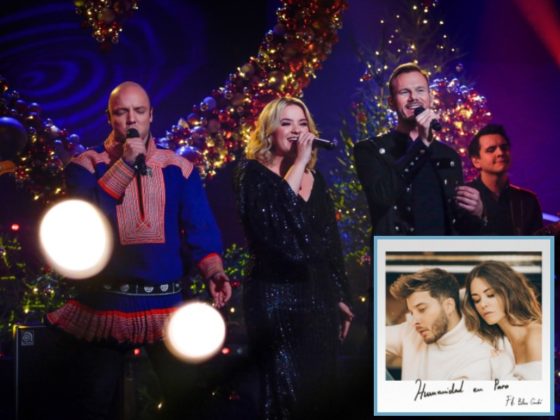
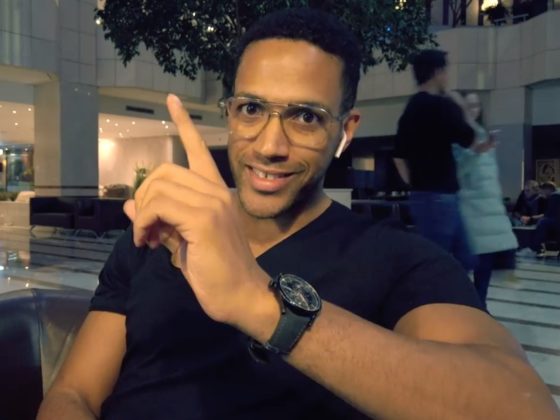
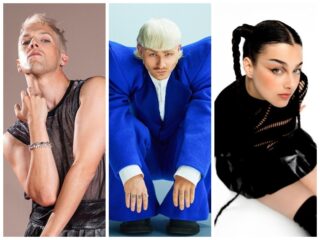
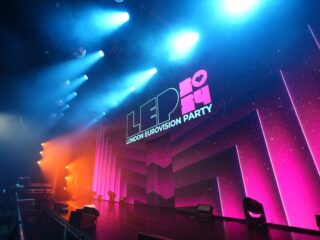


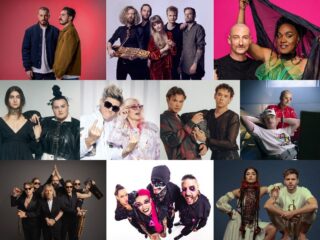
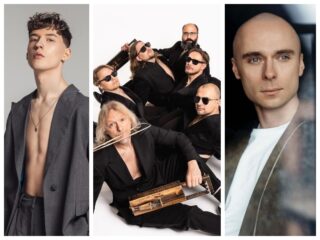


I was surprised to discover that after all the money put into converting the Copenhagen venue into one space suitable for concerts it wasn’t really used for anything more than Eurovision 2014. Seems like a waste of money. How much did they spend overall on this contest?
Found the answer in some articles. The whole thing in 2014 cost about 45 million Euros and is the second most expensive edition after Baku 2012.
“Host City Copenhagen” completely overshot its initial budget of €4.6 million and ended up spending €18.4 million on the arena and surroundings.
Isn’t it weird that the top 2 stages aren’t designed by Florian Weider? Every stage he designs has the same vibe, and doesn’t taking any risks. Time for change!
Best green room should be 2012 Baku. I love that it was really near the stage appearing in a lot of stage shots and that they were lit up.
Having being lucky enough to attend a fair number of these contests, 2014 in Copenhagen was in a different league to any stage that might come second place.
Honestly, I voted for every stage except 2010 and 2012. 2010 looked really autroucious because of the glass floor. Don’t even get me started about the shots from above. And the lights in the background were pretty sparsely placed. It just seemed like two uncompatible things combined together and most of the performances looked bad. That stage was a nightmare, sorry not sorry. I didn’t like 2012 because the shape made it really awkward and given that the shape was replicated multiple times made it worse. Performances looked good but wide shots were painful for me to watch. Plus the… Read more »
Interesting how one of the most loved stages (2016) and one of the most hated (2013) are actually same designers.
Voted for 2014 (impressive and stylish), 2016 (fantastic use of LEDs and light in general) and 2018 (liked the bridges).
My top 3:
– 2016
– 2014
– 2018
The only one I didn’t like is 2011.
Lisbon, Copenhagen and Stockholm.
2018 and 2016 takes the cake for me. 2018 was lowkey but impressive. 2016 was futuristic and solid.
For me, 2011 takes the cake. 2012 is also a fantastic stage, but was so large that a lot of entries that year felt very empty and small. I also really liked 2014, but the LED box thingys obstructed the view from the main back screen (but that’s only minor).
2014 and 2016. Grand, clean and Nordic. Keep trying, Mr. Wieder. I’d love Norway to host again but only if they put more effort into the stage and never ever again dare to skip the LEDs.
Top 3
1.2014
2.2011
3.2016
Worst 2013 than 2010
Merry Christmas everyone!! (If you celebrate it)
I think that my three favorite ESC stages are from 2013, 2015, and 2017. I like how intimate, feminine, and kayute they are. 🙂
The best are the ones that Wieder hasnt designed
2019 stage also had the highest number of pixels ever in ESC.
I didn’t see a stage in Oslo tho. LOL
No competition for Copenhagen 2014 in my opinion.
2012, 2016, 2018 and of course 2014 the most!! Best stage till now!!
I would like if we could do these articles for stages in previous decades as there has been some great designs ..
2000’s had some very diverse stages ..I would say that Riga 2003 , Belgrade 2008 would be two of the best in that decade with Stockholm 2000 being one that took a massive step for Eurovision with moving LED screens ..
Dublin 1997 would be one of my favourite in the 90s
2007, 2008 and 2009 were all fantastic
If we’re going all-time, I’d say (skipping over the ’50s and ’60s cuz most of those weren’t that interesting, except maybe 1967):
– 70s: 1978, 1979 (love that iconic spinning statue thing)
– 80s: 1985, 1986, 1987
– 90s: 1992, 1996, 1997, 1998 (also kudos to the Brits for emphasizing the orchestra!)
– 00s: 2003, 2006, 2007, 2008, 2009
– 10s: 2012, 2015, 2016, 2018, 2019
For me
70 s :1973 worst 1975
80 s: 1988 than 1987,1989 ,1985 worst 1983
90 s: 1994 than 1990, 1997,1999 worst 1992
00 s: 2009 then 2008,2005, 2003 worst 2006
10 s: 2014 then 2011, 2016 worst 2013
Oh no, 1992 was one of my favorites! Love that giant viking ship.
2014 in terms of scale and design .. also the only stage so far to have an organic element , water surrounding it .. I’m very surprised that water didn’t feature this year as I did think that Rotterdam would go with a port inspired scene ..
I also loved 2011 at the time , however the performers did look lost on stage ..
Big stages are risky because they’ll swallow up a more quiet, mid-tempo entry. Same problem with 2001. They can work really well at their best, though. (2009 might have my favorite Eurovision stage ever.)
Ukraine and Austria are the only 2 that really stand out and you instantly recognise them, the rest are all pretty plain and generic
Even Copenhagen? To me it’s the most memorable and instantly recognisable.
1. 2014 – impressive, unique, huge and really functional. 2. 2016- amazing production on this one, not that impressive as 2014 though 3. 2018 – I wasn’t keen on no LEDs at first, but it bought me later 4. 2011 – HUGE, simple, but effective 5. 2015 – really unique (no other stage is similair) and I loved the atmosphere in the arena 6. 2019 – not bad, but not great, missed something special 7. 2013 – again high production, and I loved those lamps on the ceiling, one of the least impressive though, and small 8. 2012 – big,… Read more »